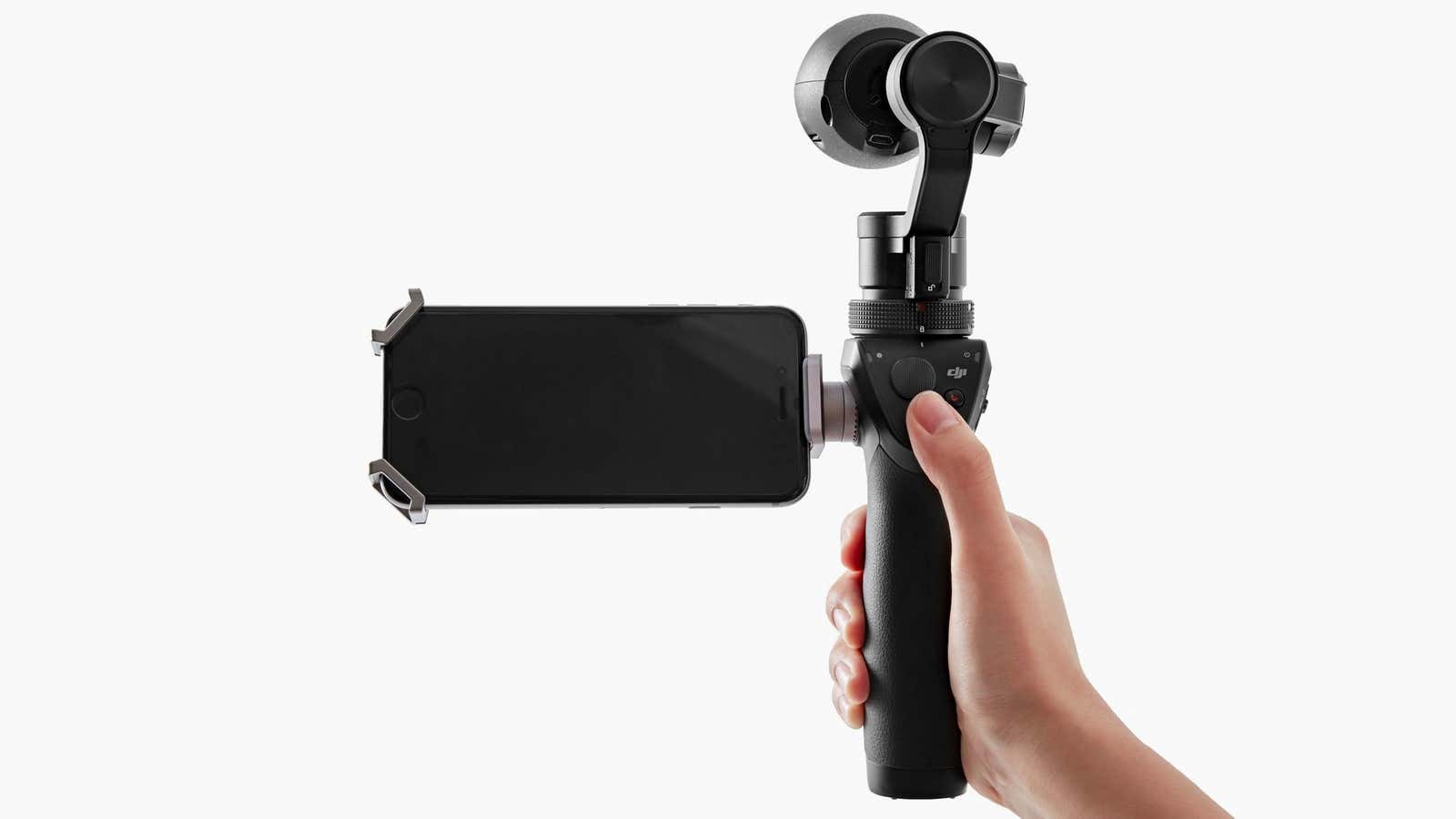Come Christmas time, hundreds of thousands of Americans will be excitedly tearing off the wrapping paper on their new drones. But what will they really have just been given?
Today’s consumer drones are mostly just cameras that can fly, and drone companies are starting to realize that. Today (Oct. 8), Chinese drone manufacturer DJI released its first handheld camera, the Osmo. No drone required.
The Osmo is a DJI-made camera that sits in a gimbal—the motorized technology that keeps drone-camera footage so smooth—attached to a handle. You can run around to your heart’s content, shooting wide-angle 4K video that shouldn’t be shaky at all.
The Osmo comes with an attachment that can mount a smartphone (I tried out an iPhone 6S Plus) on the side to act as a viewfinder. It connects to the phone through wifi, which also allows you to record and send videos to YouTube in 720p HD right from the DJI GO app. There’s also a micro-SD slot on the Osmo itself.
The camera costs $649—about the price of a GoPro with self-stabilizing stick, and comes in a tiny violin-shaped case that would fit in any backpack. DJI told Quartz that the Osmo will be for the “prosumer”: creative types like journalists and videographers who want smooth video but don’t feel like strapping on a steadicam or any other complicated system.
The Oslo’s camera is the Zenmuse X3, a camera that DJI developed in-house for its drones. It’s also planning to eventually introduce its Zenmuse X5—a micro four-thirds camera with interchangeable lenses it introduced last month—to the Osmo.
But why make something like this at all if you’re a drone company?
DJI is on course to make a $1 billion on drones this year. On one hand, creating the Osmo takes away reliance on third parties cameras—DJI has traditionally supported aerial photography standard GoPro as the camera to strap to its Phantom line of drones. But GoPro is finalizing a drone of its own, so it makes sense to move away from a competitor’s product.
Diversifying also helps DJI’s bottom line. If, for some reason, the US Federal Aviation Administration comes down hard on consumer drones when it finally codifies its rules on drones, the drone industry would lose one of its largest markets. Cameras could be a plan B.
By focusing on cameras, perhaps DJI will also take away some of the stigma associated with drones. Instead of being scary, flying privacy invaders, drones could come to seem more like just another creative tool. But that assumes we stop shooting them out of the sky, they aren’t used elsewhere for nefarious purposes, and the FAA doesn’t kill the industry.
The near future of consumer drones—especially in the US—is a bit shaky, but at least the footage on DJI’s cameras won’t be.
